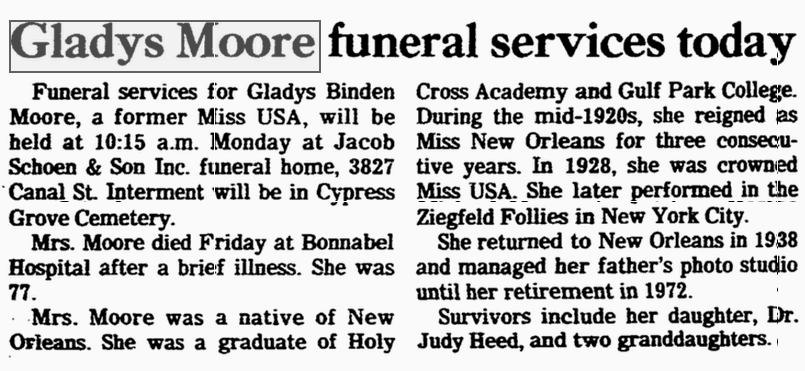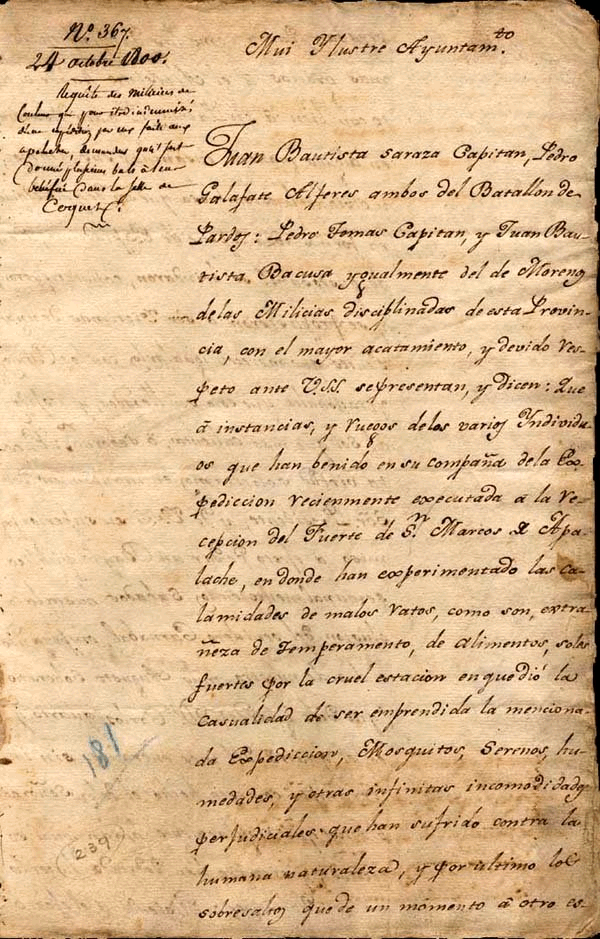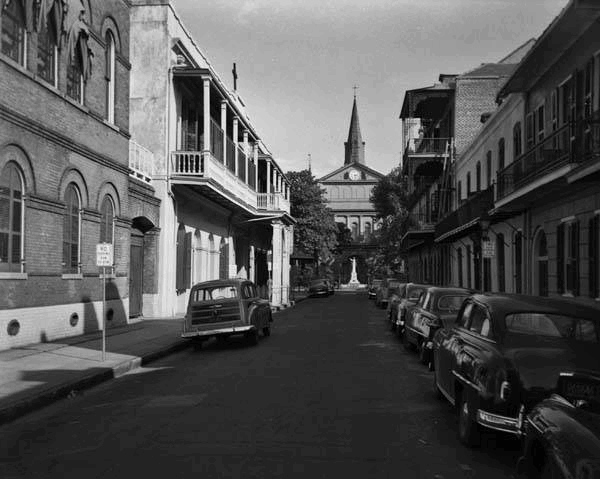|
Today in New Orleans History |
|
|
October 24


Triple Alliance Strikes On
October 24, 1892, between 2,000 and 3,000 members of the Triple Alliance struck to win a 10-hour work day, overtime pay, and
the preferential union shop. The Amalgamated Council wholeheartedly supported them. The New Orleans Board of Trade,
representing financial and commercial interests, appointed a committee to make decisions for the employers. The four main
railways that served the city and the large cotton, sugar and rice commodity exchanges pledged their support for the Board
of Trade. They helped raise a defense fund and asked the state governor to send in the militia to help break the strike. No
negotiations took place during the first week. Employers utilized race-based
appeals to try to divide the workers and turn the public against the strikers. The board of trade announced it would sign
contracts agreeing to the terms—but only with the white-dominated Scalesmen and Packers unions. The Board of Trade refused
to sign any contract with the black-dominated Teamsters. The striking workers refused to break ranks along racial lines.
Large majorities of the Scalesmen and Packers unions passed resolutions affirming their commitment to strike until the employers
had signed a contract with the Teamsters on the same terms offered to other unions. Members of other unions began to call for a general strike to support the Triple Alliance. A number of meetings
were held, during which sentiment proved so strong that a majority of the unions belonging to the Amalgamated Council voted
in favor of a resolution calling for a general strike. A Committee of Five was formed to lead the general strike. Its members
included the Cotton Screwmen's Union, the Cotton Yardmen's Union, the Printers, the Boiler Makers, and the Car Driver's
Union. The Workingman's Council again called for a general strike, which began on November
8 after two postponements. Each of the 46 unions which joined the strike demanded the union shop and recognition of their
union. Some also asked for shorter work-days or higher pay. Nearly 25,000 union members—half the city's workforce and
virtually all its unionized workers struck. Strikers were joined by non-industrial laborers, such as musicians,
clothing workers, clerks, utility workers, streetcar drivers, and printers. Streetcars stopped running. Recently
organized utility workers joined the strike. The city's supply of natural gas failed on November 8, as did the electrical
grid, and the city was plunged into darkness. The delivery of food and beverages immediately ceased, generating alarm among
city residents. Construction, printing, street cleaning, manufacturing and even fire-fighting services ground to a halt. The mayor issued a proclamation forbidding public gatherings, essentially declaring
martial law. Although the city was quiet, the Board of Trade convinced Democratic Governor, Murphy J. Foster,
to send in the state militia on November 10. Militia leaders found the city calm and orderly. Governor Foster withdrew
the militia on November 11. The Board of Trade agreed to binding
arbitration to settle the strike. Employers agreed to sit down with both white and black union leaders. After 48
hours of negotiations, the employers agreed to the 10-hour day and overtime pay, but would not grant recognition to the unions
of the Triple Alliance. (Wiki)
Stone Temple Pilots played at Voodoo Fest on October 24, 2008. William Jefferson was elected unopposed as a State Senator on October 24, 1987. Mitch Landreu was elected as State Representative, 90th Representative District on October 24, 1987. Doctor Edgar Hull, Jr. (February 20, 1904 – October
24, 1984), was a founding faculty member of the Louisiana State University Medical Center in New
Orleans in 1931. He was among those called upon to treat Huey P. Long after he was shot in 1935. In 1983, after
nearly a half-century, Hull published his memoirs, This I Remember: An Informal History of the Louisiana State University
Medical Center in New Orleans. Unlike LSU historian T. Harry Williams, who suggested Long might have survived with better
medical care, Hull said that Long could not have survived the shooting. He denied that Long had died from medical or surgical
incompetence. Hull also criticized his own conduct; though he had called for an autopsy, Hull had not been persistent enough
and allowed himself to be overruled in the swarm of events. He also wrote Essentials Of Electrocardiography - For The Student And Practitioner Of Medicine and Descendants of Cornelius Hull and Thankful (Root) Hull his wife, of Great Barrington, Mass.
Frank L. Brothers, born on October 24, 1946 in New Orleans, won two of the three U.S. Triple Crown races as a thoroughbred racehorse trainer who in 1991 . He was also voted the Outstanding Thoroughbred Trainer by the United Thoroughbred Trainers of America in 1991 and was inducted into the Fair Grounds Racing Hall of Fame.
Jazz drummer Louis Barbarin, born in New Orleans on October 24, 1902 studied under the famed drummer,
Louis Cottrell, Sr. and worked with the bands of Armand J. Piron, Papa Celestin, Papa French, Preservation Hall, and others
until he retired in the mid-1980s due to hearing problems. He was the younger brother of Paul Barbarin. Louis died on May
12, 1997.
Banjoist Lawrence (Laurence) Marrero (October 24, 1900 – June 5, 1959) was born in New
Orleans and grew up in a musical family. His brothers were Eddie (bass), John (banjo), Simon (bass), and their
father Billy (bass) were musicians. In 1919 he got his first regular job on banjo with Wooden Joe Nicholas's Camelia
Brass Band and from 1920 he joined on bass drum the Young Tuxedo Brass Band. In 1942 he made the recordings with Bunk Johnson
that started the New Orleans Jazz Revival and he soon became a legend among the Jazz fans. He was featured on many recordings
and was a regular member of the George Lewis band until ill health caused him to quit music in late 1955. The term quadroon, in New Orleans, referred to a person with one white and one mulatto
(half white, half black) parent -- someone whose lineage is one-fourth black. The quadroon balls were social events designed
to encourage mixed-race women to form liaisons with wealthy white men through a system of concubinage known as plaçage.
The history of the quadroon balls begins in the late 18th century. In February of the next year, the Spanish
attorney general, Pedro Barran, went before the Cabildo and asked that the permit granted to Coquet and Boniquet be revoked,
charging that ballroom was admitting slaves. The Cabildo resolved that dances for free people of color would be permitted
henceforth only in private homes and nullified the governor's permit. Immediately, the lessees took action to revoke the
council's decree. In a petition dated February 13, 1800, Coquet and Boniquet ask the provisional governor, Nicholas Maria
Vidal, to honor the permit previously issued by Governor Gayoso (who had since died) and to renew it for another year. Once
again, they were successful, and the balls for free people of color continued on St. Philip Street (and slaves probably continued
to gain unofficial admission). This October 24, 1800 letter (pictured on the right) from four military officers, petitioning
the Cabildo for permission to reinstate the events, is interesting because it includes descriptions of obnoxious behaviors
observed at some earlier dances, and requests that guards be posted at Coquet's establishment in order to keep proper order.
It also provides evidence of the role of African Americans in the military establishment of Spanish Louisiana, specifically
in the campaign against Fort San Marcos de Apalache, an English outpost in Florida. [From Letters, Petitions and Decrees
of the Conseil Municipal, #367 at the New Orleans Public Library]. The letter reads, in English: Captain Juan Bautista Saraza and Ensign Pedro Galafate
of the Battalion of Octoroons and Captain Pedro Tomas and Captain Juan Bautista Bacusa of the Battalion of Quadroons of the
trained militia of the province of Louisiana, with the greatest reverence and due respect to Your lordship, come before you
and expound: That through petition and pleas from various individuals who came in our company from the recent expedition executed
in accepting Fort San Marcos de Apalache where the men experienced bad times such as irregularity of weather and nourishment,
blistering heat due to the harsh season in which the expedition was undertaken, mosquitoes, night air, humidity, and other
nuisances harmful to human nature, and, finally, shelling from the cannons which they expected to receive any moment.
The men give infinite thanks to the Most High for granting them their wish to come back to their homeland. To recompense them
in some manner, to cheer up their spirit, so that they can forget the hardships of the expedition which they undertook---for
which some people compared them to irrational animals which are only led and take shelter under the hot sun which bakes their
brains---we jointly solicit the permission of the President of the Cabildo and Your Lordship to give weekly a public dance
on Saturdays until the end of the next Carnival, beginning on the day of our most august sovereign Charles IV, which falls
on the fourth of the coming month. The dance will not interfere with the one the white people regularly have, for they have
their dance on Sundays. Through the kindness of Don Bernardo Coquet, we have his permission to use his house for the
dances. We ask that you be kind enough to the petitioners to provide them with the guards of the city who previously guarded
the house when dances were given to prevent disorders. When we were on the expedition, we were informed that some people came
to the dances that were given there, determined to disrupt the peaceful diversions---some by provoking fights, others by chewing
vanilla and spitting it out for she purpose of producing an intolerable stench, others by putting chewed tobacco on the seats
so that the women would stain their garments---in short, doing and causing as much havoc as they could. This example of maliciousness
was never experienced in the innumerable dances that were given in the chosen house while the guards were present. The guards,
once you give them orders to attend, will be anxious to come, owing to the special privileges we shall offer them on the nights
the dance is given. Therefore, we humbly plead that Your Lordship be kind enough to concede this solicitation which
has nothing to do with violence and consequently will not cause any harm. This is the season for such diversion, both in America
and in Europe. We shall always keep in our hearts your renowned benevolence and kindness. New Orleans, October 24,
1800, Captain Juan Bautista Saraza, Pedro Tomas, Pedro Galafate, Juan Bautista Bacusa Coquet and Boniquet's St. Peter Street Theater at 732 St.
Peter, opened on October 4, 1792, and was the first theater in New Orleans as well as the location of the first documented
opera performance (Andre Gretry's Sylvain) which took place in 1796. For the next eighteen years, through financial ups and
downs, crises of management and personnel, and competition from other theaters, the St. Peter Street Theater presented opera,
ballet, and dramatic performances. Louis Tabary, who took over the directorship of the St. Peter Street Theater in 1806.
The venture finally succumbed to a combination of pressures in 1810, and in 1816 the building burned, in the same fire that
destroyed the first Orleans Theater. The structure on the site today was constructed in 1825 and is in the same block with
Preservaton Hall and Pat O'Brien's. No drawings of the St. Peter Street Theater appear to have survived. and soon after built
the Orleans Theater Reports of balls at the Washington, Conti, and Chartres ballrooms in 1843 may provide evidence of the famous quadroon
balls that were held on a regular basis in New Orleans during the period. The Bee newspaper of April 18, 1843 carried
a small advertisement for the Washington Ballroom indicating that "Grand Dress and Masked" balls were held
on every Monday, Wednesday, Friday, and Saturday evening. Interestingly, the French section of that same newspaper has an
advertisement stating that the balls were held every day except Sunday. At least one historian claims that the quadroon
balls were the ones held on Tuesday and Thursday. (From the New Orleans Public Library) Concerning
New Orleans history and the quadroon balls in particular, beloved newsman and writer Phil Johnson said: "Thank God the French got here first. Can you imagine what New Orleans might have been had the Pilgrims
gotten off at Pilottown instead of Plymouth? It's frightening . . . we might have been burning witches instead of cafe
brulot; or preaching to the quadroon beauties, instead of dancing with them; or spending eons eating boiled beef and potatoes,
instead of ecrevisse Cardinal, or pompano en papillote, or gumbo." [Phil Johnson, "Good Old Town." In The Past as Prelude: New Orleans 1718-1968. Ed. Hodding Carter, p. 233.] From the Cabildo Digest of the New Orleans Public Library: October 24, 1794 -- At this time an official letter from the Governor and President is read, enclosing a bill for the street lamps and reflectors which were transported here from Philadelphia on the ship “La Victoria,” amounting to 626 Pesos, 5 reales, and 39 Maravedis. The Commissioners agreed to reimburse the Royal Treasury for this amount, obtaining the proper receipt. - Also Don Santiago Freret presents a bill for the cost and transportation from Philadelphia, of twenty-two barrels of grease, which was approved. Don Pedro Durel, Master Cooper, presents bill for work done in the warehouse to store the grease. Don Carlos de la Chaise was appointed to examine this work and have it appraised by the other coopers; he approved the work and the Commissioners agreed to pay the said Pedro Durel. The opinions of the doctors and surgeons, and a report on a location for a new cemetery were submitted at a meeting of the Cabildo on October 24, 1788. The Commissioners agreed upon a location in the rear of Charity Hospital, about 40 yards from its garden, to measure 300 square feet. The Governor was asked to obtain the approval of His Majesty. Later Antonio Guedry presented a bill for expenses and personal labor in fencing the cemetery.
|
|
|

To receive an update for each day in New Orleans history,
join our facebook page - Today in New
Orleans History.
Analytics |






